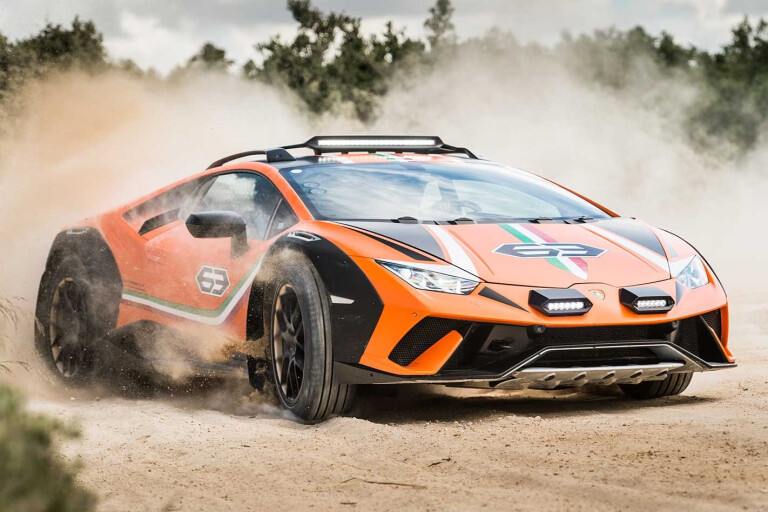
In the darkest corner of the Emilia Romagna region of Northern Italy, out of sight of Wolfsburg’s prying eyes, Lamborghini chief designer Mitja Borkert and senior engineer Rouven Mohr created a secret project codenamed Sterrato.
The most extreme concept prepared in the Sant’Agata skunkworks since the single-seater Egoista, this Huracan-based car taps the bloodline of the Dakar-winning Porsche 959 and the Group B Audi S1 WRC weapon.
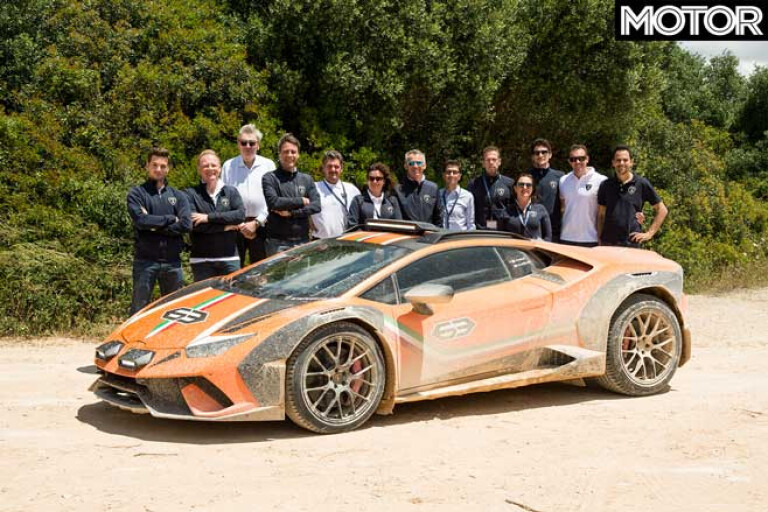
Although described as a one-off thought balloon by its creators, who underplay their guerrilla projects under the tight-fisted regime of the Volkswagen Group, the Sterrato (Italian for dirt road) has in fact been pencilled in as a limited-edition model due in 2021.
In order to try out the sole running prototype, we’re at the awesome Nardo handling track owned and run by Porsche, the temperature is a friendly 23 degrees, and the circuit is ours for the day, including the challenging Strada Blanca off-road course.
The Sterrato looks and feels like a Huracán that has been gene-manipulated for the World Rallycross Championship. It sits 47mm higher than the rest of the range, its track is 30mm wider front and rear, the front spoiler has a stiffer upper lip and a receding chin, the rear departure angle is increased for extra clearance, but the tread pattern of the bespoke softer-sidewall tyres looks more race than rally.
It’s undoubtedly an oddball concoction of style, stance, substance and seriousness. But this showpiece – boasting the number 63, the year Lamborghini was founded – turns more heads than a white tiger slurping iced coffee in a local gelateria. It sounds captivating, and with all lights blazing it could be mistaken for some sort of bizarre vehicle built to withstand a zombie apocalypse.
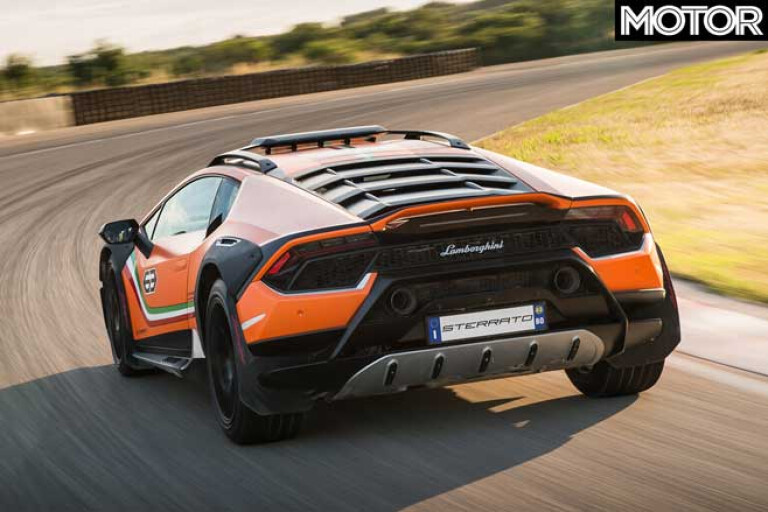
Climbing behind the wheel is easy thanks to the wide-opening scissor door and elevated ride height. The cool multi-material bucket seats could have come straight out of Kanye West’s Yeezy factory, the five-point harness scores nine out of ten on the bondage chart for private parts, and the driver environment looks familiar despite all the colourful new surface trim.
To compensate its weight, drag and suspension set-up handicaps, the stilted soft-roader is fitted with the 477kW V10 out of the no-holds-barred Performante. The normally aspirated 5.2-litre engine works all four wheels through a quick-shifting seven-speed dual-clutch transmission, not the stubborn sequential ISR ’box unique to the Aventador.
The mighty direct-injection engine needs 6500rpm to tick off 600Nm of maximum torque, peak power arrives at 8000rpm, and the rev limiter is set at 8500rpm. This is a wonderful powerplant for a car dedicated to inveterate late-brakers and apex-clippers, but does it also perform to expectation in this softer-sprung, stacked, go-anywhere metamorphosis?
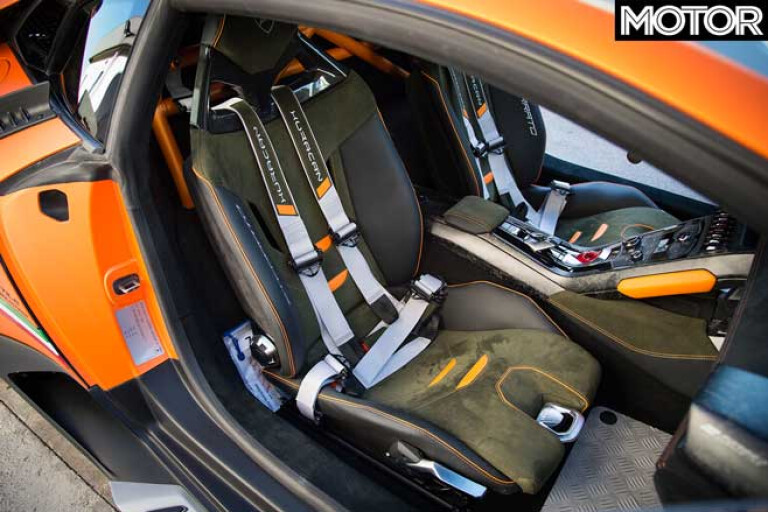
We do two laps in Corsa mode, then ESP comes off and, sure enough, from one instant to the next the orange stripemobile begins to catch insects with its side windows as the driver’s heartbeat quickens and the intercom squawks avanti! forza! and bravissimo! from co-driver Nicolo.
This is hard work. Over the brows, the special BBS alloys shod with hand-baked Pirellis (255/45 ZR20 front, 305/45 ZR20 rear) stretch the springs until the aluminium monocoque hurts. Through the dips, the softer dampers and cushier tyres extend the compression effect all the way to the pit of the stomach. When the radius tightens, blossoming lift-off oversteer can be coaxed into creamy slides – with enough attempts.
Drifting this wild thing in fourth gear at 120km/h certainly fixes another treasured commemorative medal to the brimming clipboard inside my head. The adrenaline floodgates open regularly on the approach to a roller-coaster off-camber uphill corner and towards the end of the fastest right-hander, where it’s all too easy to run out of road, ability or courage. Or all three.
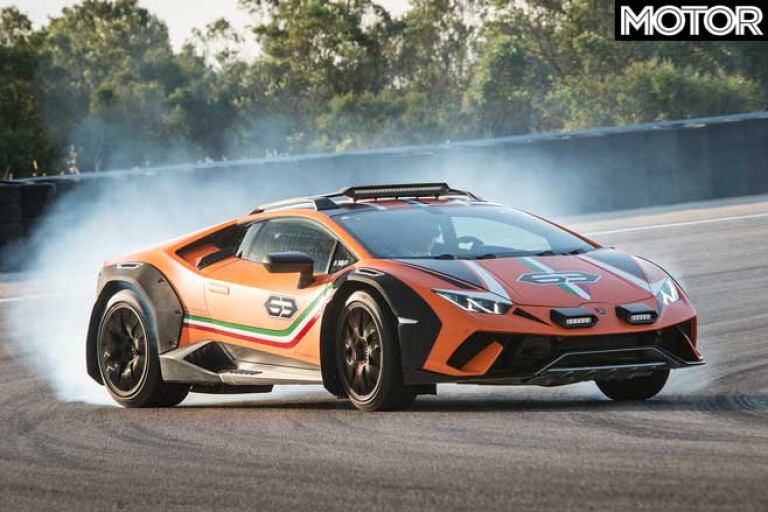
“This is a bad place to get it wrong,” says Nicolo, before adding unhelpfully: “But while waiting for the recovery truck you can at least relish the full panoramic beauty of the Adriatic Sea...”
The fifth-generation Haldex all-wheel drive system has been carefully recalibrated for the Sterrato. On solid ground, it channels only slightly more torque to the rear wheels, but when it comes to pulling the car out of a second-gear kink, the front wheels are for three or four car lengths assigned a larger chunk of the traction work. This explains why the fun-friendly Huracán is tail-happier on the track than the Performante, yet every bit as competent as the Urus on sand and gravel.
Having said that, the different tyre compound and more compliant suspension add a metre or two to the stopping distance, which increases further in small increments as the rubber and pads get hotter.
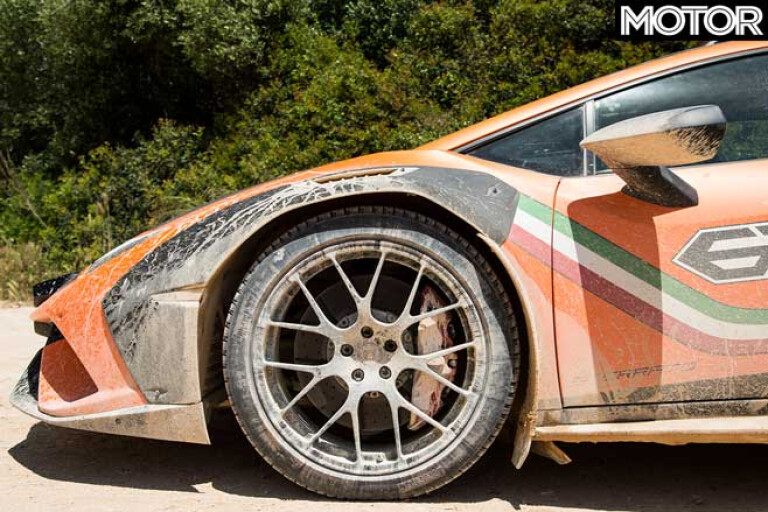
Like the Huracán Evo, the Sterrato features LDVI (Lamborghini Dinamica Veicolo Integrale) that controls ABS, ASR and ESP, along with AWD, torque vectoring, damper setting and steering action front and rear.
On the circuit, of course, the most radical Lamborghini since the 2013 Veneno does not handle or perform like its ground-hugging stablemates, yet loses only two-tenths from 0-100km/h, which is covered in 3.1sec. Maximum speed is 303km/h compared to 327km/h for the more slippery donor model.
Although the transmission wastes no time selecting the appropriate ratios in Corsa mode, manually overriding the computer is even more rewarding, since it keeps up the flow by avoiding redundant downshifts. Third proves to be a great all-purpose weapon, fourth is the gear of choice for the two double-apex corners, fifth is a test for high-speed cornering grip, and sixth takes you all the way to the my-heart-is-in-my-boots left-hander.

Over lunch, technical chief Maurizio Reggiani talks freely about the probability of the Sterrato making it into production.
“Even though the budget is quite tight – it always is at Lamborghini – the provisional business case suggests that we can build this car at a profit,” Reggiani says. “How is this possible? By manufacturing all restyled or new body panels, claddings, ducts and splitters on 3D printers. For this purpose, we developed a lightweight synthetic material which is in its final shape bolted or screwed onto the finished body.
“The idea for this car was born here in Nardo, where we have both worlds next to each other. While the Urus is clearly more SUV than sports car, the Sterrato is a Huracán with the abilities of a crossover.”

According to the Sant’Agata grapevine, the plan is to assemble 500 to 1000 units priced at about 240,000 euro apiece – a premium of about 20 per cent over the Performante, so about AUD$580K.
Since the Huracán replacement is still five years away, Lamborghini needs one new derivative per year to steady sales of the current model. In 2020, we will therefore see the high-performance STO Supertrofeo Homologato; in 2021, the Sterrato should follow suit; for 2022, insiders predict a Huracan hybrid; and 2023 is the target launch date for the 492kW Superveloce.
A year ago, a pre-production Urus we drove was very much a used car once it emerged from Nardo’s ‘white hell’ – paved with stones, rocks, pebbles and 37 different grades of sand and gravel – so the afternoon did not bode well for the much more vulnerable Sterrato. But we were told not to worry. “It can take quite a bit of abuse, and I guarantee that it will make your next outing a very enjoyable one,” said technical director Carlo Della Casa, who has joined Lamborghini from McLaren.
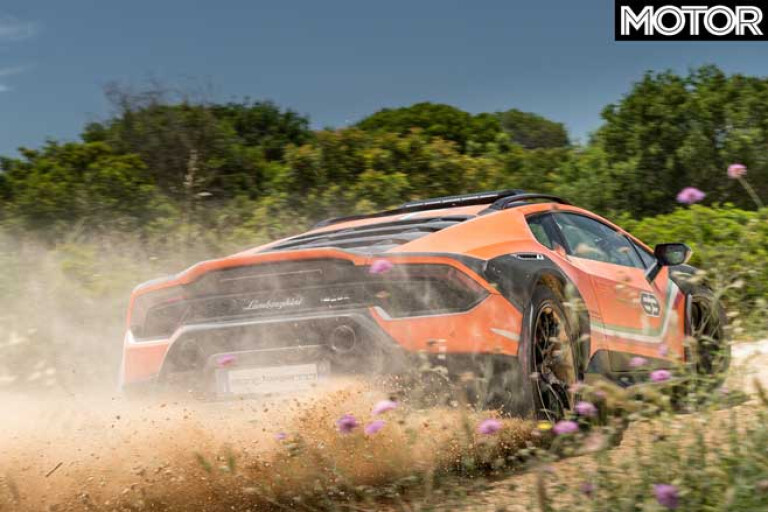
After only one familiarisation lap, it’s go-go-go with ESP off, eyes wide open and heart in throat. The ka-runch suspension is not height-adjustable, but we had spotted a pair of token underbody protection panels, and there is allegedly a solid skid plate to shield the driveline.
Conspicuous by its absence is an in-between mode to bridge Corsa and ESP off, and at the end of the wet section the allegedly self-cleaning tyres look like F1 slicks caked with hot mud.
One hour later, they need a blowtorch to remove me from the cockpit – just like my first drive in the Ferrari Enzo at Fiorano. Yes, it’s that special an experience.
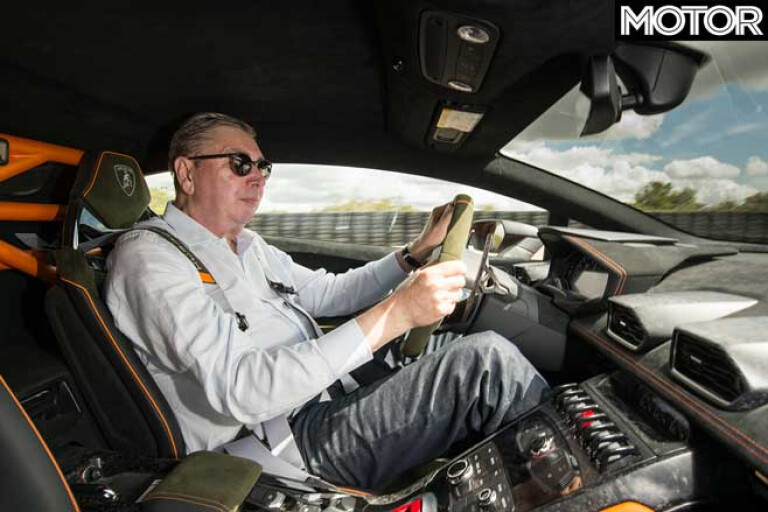
The Sterrato is an intoxicating, hilarious device. It shaves third-gear brows like a buzzard on the final approach to its prey, dives into dips like an angry rhino chasing the most hated gamekeeper, and corners with all the tippy-toed eagerness of a frolicking antelope.
On the loose stuff, power-on equals snap-oversteer, one quick zig-zag pendulum manoeuvre sets the car up before it enters a bend, and storming out of one radius and roaring towards the next fantastically shifts the momentum briefly, but reliably, to the front wheels. But it takes a lot of confidence (or the encouragement of a seasoned co-driver) to keep the foot planted for that vital rear-to-front torque transfer, which makes all the difference.
It’s goosebump stuff on lap two, makes you feel like a hero on lap three, chips a morsel off the left-rear wheel spat on lap four, becomes totally addictive (and bin-it territory) from lap five onwards.
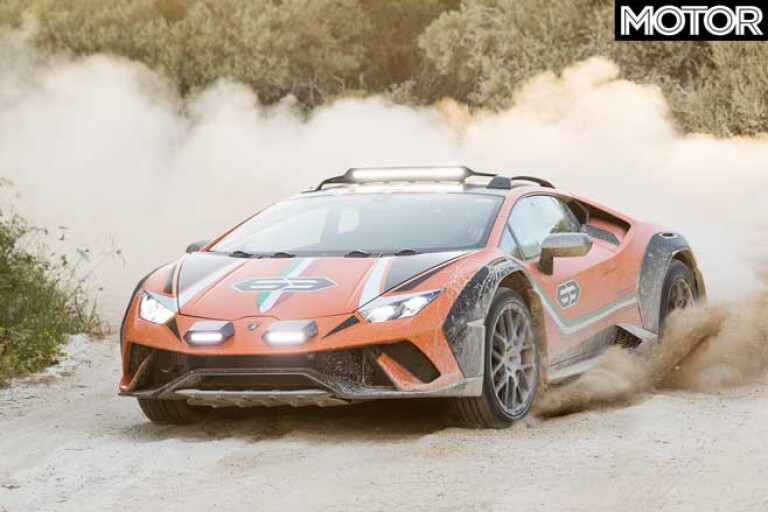
Coated with mother earth’s finest powder, sprinkled with Puglia’s darkest soil and proudly displaying several gorse-inflicted battle scars, the Sterrato suddenly looks like a motocross rider who has mastered the famous Erzbergrodeo. Watching this unicorn Huracán gallop sideways through the green-and-beige Jurassic pleasure park is unforgettable, it steaming around the handling track trailing a whiff of blue tyre smoke while the two rows of LEDs stage a super-cool light show.
Am I getting carried away by the child inside? Perhaps so. But the Sterrato hits a bull’s eye in more ways than one. It is even more playful than its siblings, and the mere prospect of enjoying a long cold winter in a hardcore sports car is bound to make quite a few Lambophiles reach for their chequebooks.
The only evident downsides concern the durability of those somewhat coarse add-on flaps and flares; the spiderweb roll cage and armadillo rear window cover that mess up rearward vision; the steam-hammer noise level; and the puerile roof rack for skis and surfboards that does little more than squeeze the lifestyle gland of easy-to-please social influencers.
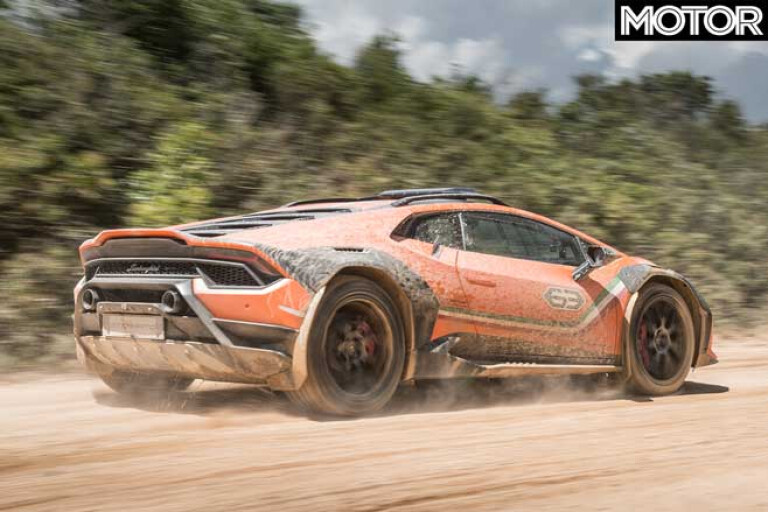
The Sterrato’s future is far from certain, however, with no shortage of sceptics and naysayers. At this point, Lamborghini is still a satellite of Audi, but the long rumoured transfer to Porsche should help the Lambo folks get a handle on their own pressing issues, which no longer include a new R8.
Under the stewardship of Porsche, they can concentrate on replacements for the Aventador (now 2021) and Huracán (now 2024), ponder a fully electric Uracco that would share its DNA with the next Cayman (983) and the proposed Audi TTE, and zoom in mid-term on a two-plus-two-seater GT loosely based on an evolution of the Porsche Taycan.
In this grand plan, the Sterrato marks a potentially rewarding step towards Lamborghini’s goal of securing a safe future. And inject a crazy genre-busting car into the supercar world.
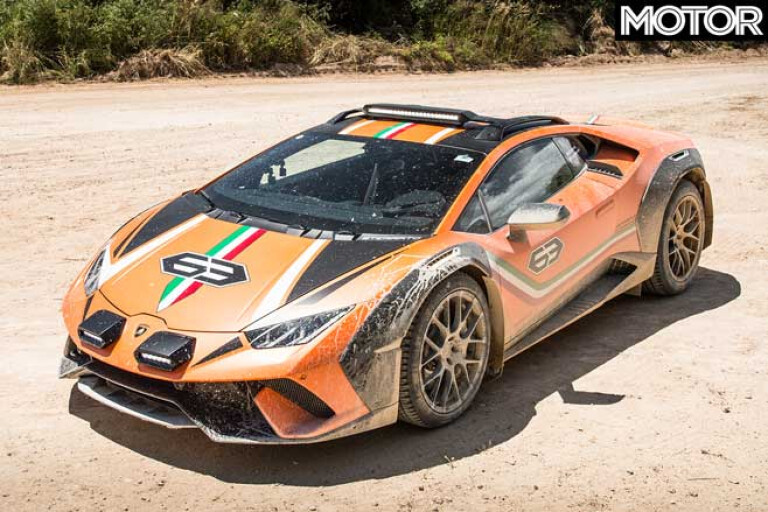
FAST FACTS
Lamborghini Huracán Sterrato concept
BODY: 2-door, 2-seat coupe
DRIVE: all-wheel
ENGINE: 5204cc V10, DOHC, 40v
BORE/STROKE: 84.5 x 92.8mm
COMPRESSION: 12.7:1
POWER: 477kW @ 8000rpm
TORQUE: 600Nm @ 6500rpm
WEIGHT: 1450kg (est)
POWER-TO- WEIGHT: 328kW/tonne (est)
TRANSMISSION: 7-speed dual-clutch
SUSPENSION: double wishbones, coil-over dampers, anti-roll bar (f/r)
STEERING: electrically assisted rack-and-pinion
BRAKES: 380mm carbon-ceramic discs, 6-piston calipers (f); 356mm carbon-ceramic discs, 4-piston calipers (r)
WHEELS: 20 x 10.0-inch (f); 20 x 12.0-inch (r)
TYRES: Pirelli (custom made), 255/45 ZR20 (f); 305/45 ZR20 (r)
PRICE: $580,000 (est)
PROS: How much fun could you have off-road?
CONS: Would you take it off-road? Can they be serious?
RATING: 5 out of 5 stars
The mad science behind the Sterrato

Hot Wheels meets Tonka Toy meets The Transformers. That’s what comes to mind when you first see this caricature of a coveted yet barely recognisable high-performance Lamborghini.
“They nicknamed me ‘The pleb from the East’ for a reason,” chortles head of design Mitja Borkert in his thinly disguised Berlin Wall twang. “You see, the sports car business is all about emotion these days, and that’s what the Sterrato delivers in abundance.”
But why slap on mockeries like two rows of Scalextric light bars, Bobby Car decals and Transit van wheel spats? “Because we can!” The answer rang out like a shot.
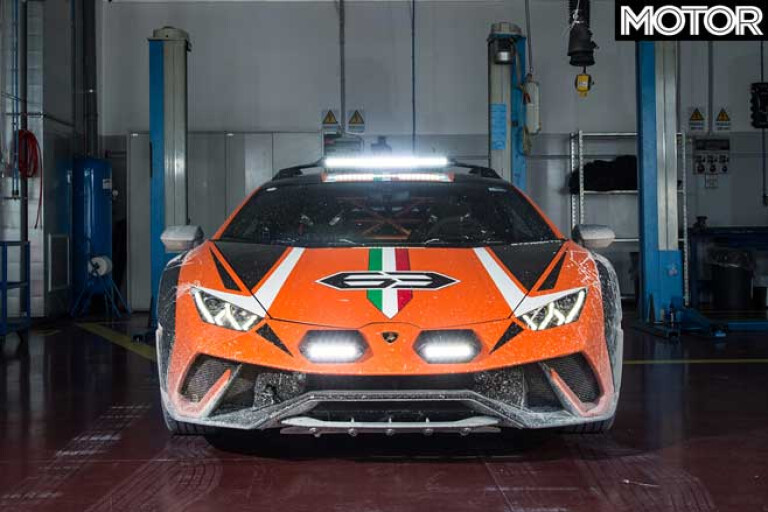
“This is a not a pimp-my-ride phoney but an admittedly polarising eye-catcher with the substance of a thoroughbred down to the last cell and fibre.
“The buyer’s wish is our command,” Borkert says. “From a laidback monochrome croisette charmer to a race-ready competition car to the ultimate winter special in matte camouflage livery, anything is possible, at a price. Lamborghini’s Ad Personam division caters to almost every whim!”

COMMENTS